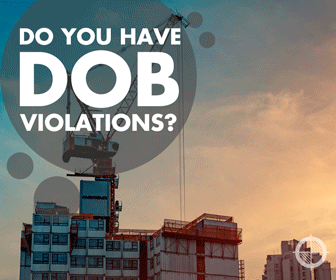
25 to Zero: DOB Increases Effort to Reach Net Zero Emissions by 2050
This March, the Department of Buildings (DOB) nearly doubled the amount of staff members dedicated to enforcing Local Law 97 (LL 97), a landmark carbon emissions law, increasing the number of personnel from 11 to 21. The change responds to recent criticism about the lack of resources dedicated to addressing climate change in New York City, and indicates a renewed effort to upholding the law as increasingly stricter emission benchmarks loom in 2025.
Since its inception in 2019, LL 97 has promised a host of significant changes to NYC building code and zoning laws. The law covers about 60% of all buildings in the city, and aims to achieve carbon neutrality by 2050. The first emission limits went into effect this January, alongside the introduction of “Good Faith Effort” exceptions, which allowed certain buildings to waive the requirement if sufficient proof of future effort is provided. City officials hoped to ease building owners into the new requirements with these exceptions, as the limits on carbon emissions are projected to rapidly decrease every year — as of right now, the goal is to reduce 40% of all emissions by 2030.
The DOB’s LL97 team is responsible for reviewing building emissions reports and enforcing penalties when necessary, but experts and activists believed that the previously small team would not be capable of accurately reviewing all 50,000 reports. However, since receiving criticism, the DOB has begun allocating more appropriate resources towards the law, including increased staffing and outreach, and claims to be working towards expansion.
The Timeline to Net Zero
While the Local Law 97 administration is in its early stages, building owners can expect the effects of the law to increase rapidly in the near future.
The prospective timeline is as follows:
- November 2019: LL97 goes into effect, with goals to reach a 40 percent reduction in greenhouse gas emissions from buildings by the year 2030 and net zero by 2050. Carbon limits apply to buildings over 25,000 ft.
- December 2022: DOB announces emission limits and clarifies technical compliance details in Rule 103-14.
- January 2024: The 2024 compliance period begins, capping building emissions until 2029, except for buildings covered under Article 321 (i.e. affordable housing).
- December 2024: By this date, Article 321 buildings must either a) demonstrate that emissions are below the acceptable 2030 limits, or b) show that applicable Prescriptive Energy Conservation Methods have been fully implemented.
- May 2025: The first annual report due for ALL buildings covered under LL97, detailing carbon emissions produced in the prior year. The same report will be due on May 1 every year thereafter.
- June 2025: By this date, city government operations must reduce 40% of emissions below fiscal year 2006.
- January 2026: The Office of Building Energy and Emissions Performance (OBEEP) submits the first report to the mayor on the compliance of all buildings covered under the law. This report will be due annually on Jan 1 thereafter. Buildings with up to 35% rent regulated units begin complying with the emission caps.
- January 2030: The 2030 compliance period begins, meaning stricter limits to carbon emissions will apply to buildings for the years 2030-2034. New York City Housing Authority (NYCHA) must make efforts to reduce emissions 40% below carbon levels in 2005. New York City Housing Authority (NYCHA) must make efforts to reduce emissions 40% below carbon levels in 2005. The carbon produced by a building’s electricity use is projected to be reduced by a renewable energy-powered grid, and this lower electricity carbon coefficient will be reflected under the law.
- June 2030: By this date, city government operations must reduce 50% of emissions below fiscal year 2006.
- January 2035: The 2035 compliance period begins, meaning stricter limits to carbon emissions will apply to buildings for the years 2035-2039. The electricity carbon coefficient will once again be redefined in accordance with the progress of the renewable-energy powered grid.
- January 2040: The 2040 compliance period begins, meaning stricter limits to carbon emissions will apply to buildings for the years 2040-2049.
- January 2050: All buildings covered under the law must produce an emissions factor of 0.00 beginning this year. NYCHA must make efforts to reduce emissions 80% below carbon levels in 2005.
Conclusion
Previous climate change initiatives in NYC have addressed the surface of the issue, but none so far have promised such far reaching results as Local Law 97. The law is both lauded for its ambition and criticized for its leniency, but if the recent increase in staffing is any indication, city officials intend to prioritize the preservation of this city’s ecosystem. Preparing for the inevitable future will only prevent unnecessary costs, so it’s important for building owners to begin investing now, as the 2025 benchmark rapidly approaches.
While the upfront costs might seem daunting, investing in green energy has long-term benefits, for both the city and building owners alike. For more assistance with understanding Local Law 97, or for any other building code and zoning concerns, contact Outsource Consultants, Inc.
Resources








